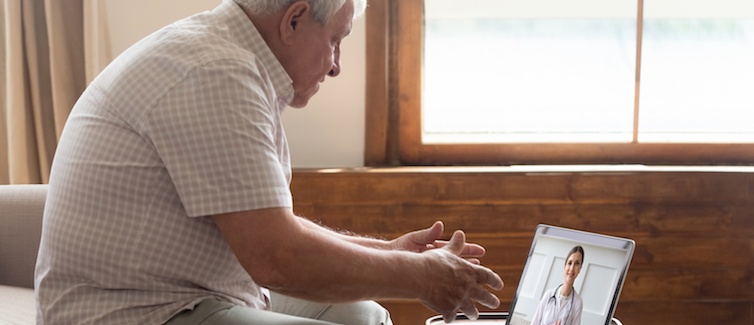Disclaimer: At UPMC HealthBeat, we strive to provide the most up-to-date facts in our stories when we publish them. We also make updates to our content as information changes. However, education about COVID-19 can shift quickly based on new data, emerging variants, or other factors. The information in this story was accurate as of its publish date. We also encourage you to visit other reliable websites for updated information, including the Centers for Disease Control and Prevention (CDC), Food and Drug Administration (FDA), and your state and local governments.
The global COVID-19 pandemic has caused millions of infections and hundreds of thousands of deaths worldwide since late 2019. The disease, caused by the novel coronavirus SARS-CoV-2, has spread worldwide.
People most at risk for getting COVID-19 include those who live, work, and/or travel in communities where it is most rapidly spreading. Being in close contact – within 6 feet – of someone who has COVID-19 also puts you at risk.
The disease causes respiratory symptoms like fever, cough, and shortness of breath, but also can lead to more serious complications like pneumonia.
One of the groups most at risk of getting COVID-19 – and of developing serious illness – is older adults.
Never Miss a Beat!
Subscribe for Updates and Information from UPMC
Thank you for subscribing!
You can now select the specific newsletters you'd like to receive.
You are already subscribed.
Subscribe to more newsletters in our email preference center.
Sorry, an error occurred. Please try again later.
Sign up for COVID-19 Alerts from UPMC
Risk of COVID-19 in Older Adults
Older adults make up the largest group of people getting COVID-19 and having serious health problems from it.
The Centers for Disease Control and Prevention (CDC) estimates that of U.S. adults 85 and older who get COVID-19:
- 31-70 percent will need hospitalization
- 6-29 percent will need admission to an intensive care unit (ICU)
- 10-27 percent will die
Of U.S. adults between the ages of 65 to 84 who get COVID-19, the CDC estimates:
- 31-59 percent will need hospitalization
- 11-31 percent will need admission to an ICU
- 4-11 percent will die
A March 2020 study by the CDC looked at COVID-19 cases in the United States. According to the study, adults 65 and older made up 31 percent of U.S. COVID-19 cases with a known patient age.
This same age group made up 45 percent of hospitalizations, 53 percent of ICU admissions, and 80 percent of deaths. Fatality percentages increased with age.
Why Are Older Adults More at Risk?
Although the exact reason why older adults are more at risk from COVID-19 is unknown, several factors could contribute:
- Immune systems: Immune systems grow weaker as people age, making it more difficult to fight off infections and serious complications more likely.
- Existing health conditions: Older adults also may have pre-existing health conditions that could put them at risk for COVID-19. The CDC says health conditions like lung disease, heart disease, diabetes, renal failure, and liver failure can raise the risk of COVID-19. So can a compromised immune system, such as from cancer treatment.
- Living in close communities: When someone with COVID-19 coughs, sneezes, or talks, it releases airborne droplets. Those droplets then can be inhaled by uninfected people in close contact – within 6 feet. The CDC says people living in facilities with large numbers of people, like nursing homes or long-term care facilities, are at risk.
How Can Older Adults Prevent COVID-19?
Because of their risk, COVID-19 prevention methods are crucial for older adults. The CDC recommends several steps they can take to prevent infection:
- Stay home: Because being in contact with someone who is infected puts you at risk, staying home can lessen that risk. Avoid any unnecessary trips out of the house.
- Wash your hands: Use soap and water and scrub for 20 seconds before rinsing. If soap and water are unavailable, you can use hand sanitizers with at least 60 percent alcohol. It’s especially important to wash after coughing or sneezing, before eating, after going to the bathroom, and after touching common surfaces.
- Clean and sanitize common surfaces: This includes tabletops, counters, doorknobs, telephones, remote controls, and other objects that you frequently touch. Use disinfectant wipes or a household cleaning spray.
- Don’t touch your mouth, nose, or eyes: Touching your face, especially with unwashed hands, can cause you to become infected if you have come in contact with the virus.
- Follow facemask recommendations: The CDC recommends wearing a cloth face covering in public, especially in places like grocery stores and pharmacies.
If you have any questions about COVID-19 and how you can prevent it, contact your health care provider. Visit UPMC.com/COVID19 for more information.
Sources
About Infectious Diseases
If you have a disease caused by bacteria, fungi, parasite, or virus, the UPMC Center for Care of Infectious Diseases can help. Our team of experts is specially trained in the prevention and treatment of infectious diseases, including of HIV-AIDs, postsurgical and transplant infections, illnesses caused by international travel, and more. We research infectious diseases and participate in clinical trials to learn more and develop better treatment and prevention methods. Visit our website to find an expert near you.
